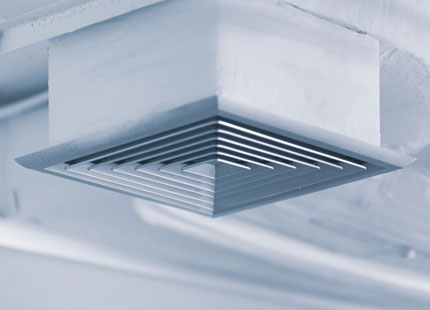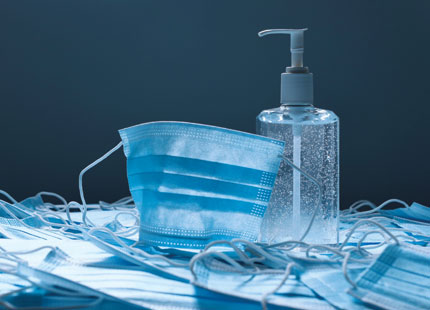27.05.2021
Reimagining Buildings: Rethink and Refit for Airborne Infection Control
Modern building constructions and renovations can offer significant benefits to building occupants. They can be healthier, cleaner, and far safer when the right strategies and precautions are implemented. However, maximizing airborne infection control in healthcare settings, as well as other applications, can be complicated. Doing so depends on maintaining an environment that reduces the spread of aerosols and suppresses airborne particulates - including dust, allergens, and mold spores. Proper humidity control is therefore critical. In a chaotic time when the COVID-19 pandemic has reminded us just how fragile and sensitive human beings are to health complications, it is also a fitting to reimagine how we work and manage our workplaces.
Today, let’s rethink and refit operations across all applications, ensuring more effective airborne infection control precautions – and the preservation of our health tomorrow.
Getting to Know Your Indoor Environment
Like other applications, when it comes to hospital airborne infection control, facility management and maintenance play an important role in keeping the building environment clean and safe. Components such as ventilation, filtration, and the accuracy of indoor air monitoring systems, go hand-in-hand, and have influential effects on a building’s temperature and relative humidity. In addition, light, moisture sources, and even certain building materials can trigger fluctuations in relative humidity and temperature.
For hospital airborne infection control to be effective, it is important to maintain a relative humidity between 40 to 60 percent. Deviations can make the building environment too dry or too moist - which could lead to an assortment of risks including electrostatic shocks and breathing difficulties.
With this example in mind, building managers would benefit from developing a deeper understanding of how their specific properties work. For instance, perhaps the ventilation system could use a little optimizing to address “dead zones” where humidity and fresh air does not circulate well, or maybe the factory production floor is too dry, not only endangering worker health and safety, but also risking electrostatic damage to expensive equipment.
Be proactive and create innovative and comprehensive health-conscious standards for your building environment. Performing studies and routine analyses of building operations are essential to improving relative humidity and, in turn, airborne infection control.
Restricting Aerosols – and Viral Spread
With that said, why is it so important that we optimize our airborne infection control precautions? Well, the answer lies within aerosols, microscopic droplets of moisture rich in bacteria, viral, and other particulates. These travel freely through the airstream, carried by the airflow. If permitted to enter ventilation or spread over longer distances, it can be much more difficult to control a viral outbreak.
In the regulation of indoor air quality, more can be done to keep occupants and visitors safe. Countless scientific and healthcare studies have been completed over the years, documenting the impact our indoor climate has on the immune system and the spread of respiratory infections. Therefore, restricting the reach of these aerosols, using the 40 to 60 percent RH range to reduce their airborne spread, is what constitutes effective airborne infection control precautions in the modern age.
What We’ve Learned from COVID-19
Sanitizing touchpoints, masking up and socially distancing can help in fighting a potent viral outbreak such as COVID-19. To further assist, your indoor environment needs to actively support the suppression of the pathogens in question. Introducing fresh air to the airstream, regulating indoor relative humidity, and keeping the indoor temperature under control are all key elements in fighting the spread of any respiratory virus. Therefore, it’s important that we reimagine our workplaces, our businesses and even our homes, making informed adjustments that are proven to reduce aerosol spread, maintain consistent indoor parameters, and keep folks safe.
Retrofitting old buildings is not only useful at making them more energy-efficient and compliant with modern codes, in doing so an investment is also made into improving occupant health and safety. It’s time to open up a dialogue with facility managers, engineers, maintenance team, and others who help keep your operations shipshape. Work together to identify and assess risks, act on achievable solutions, and reach out to an experienced indoor environmental control team if assistance is required.
At Condair, we believe in empowering facility operators in the fields of healthcare, retail, warehousing, and much more. By implementing more effective health protection measures and investing in optimal building solutions, you’ll have a happier, more productive and safer everyday operation in place. For assistance with relative humidity control or to learn about our humidification solutions, contact us today. We’re happy to help.
Helpful Links:
https://www.condair.com/m/0/making-buildings-healther.pdf
https://www.condair.com/humidifiernews/blog-overview/our-indoor-air-quality-and-climate-control-tips-for-2021
https://www.condair.com/humidifiernews/blog-overview/why-upgrade-to-a-modern-humidifier



